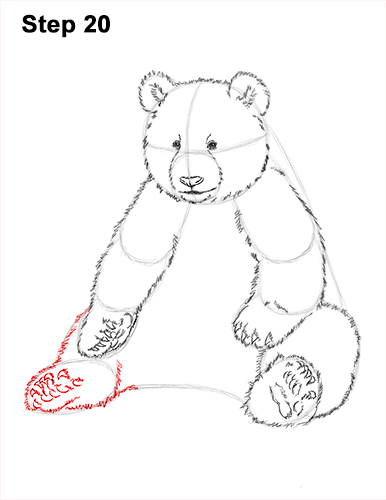
Step 20: Use quick, short strokes along the edges of the guides on the left for the fur on the foot. Use small triangles near the left edge for the claws. Curve the claws a bit and use quick, short strokes along their base. Now use a series of curved lines to the right of the claws for the padding under the foot. Finish up the shape of the panda's leg by adding quick, short strokes along the edges of the guides.
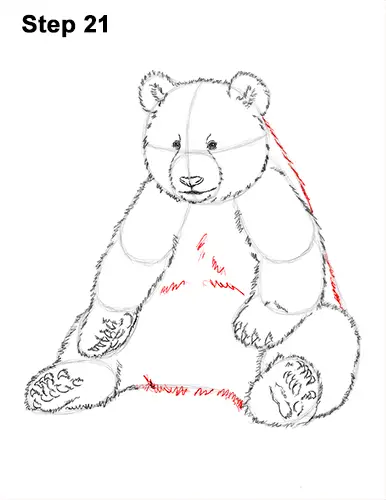
Step 21: Use the remaining lines as guides to finish drawing the rest of the panda's body. Simply use quick, short strokes along the outer edges of the guides for a fur-like texture. Add some quick, short strokes on the chest for more furry texture.
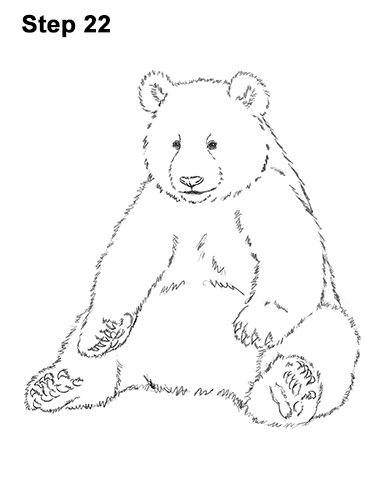
Step 22: For a cleaner look, erase as much as you can of the initial guide lines. Don't worry about erasing all of the guides. It's okay to leave some behind. Re-draw any final sketch lines you may have accidentally erased.
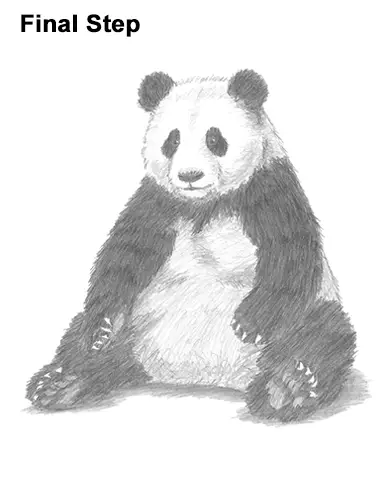
Final Step: Something's missing. The pattern of the panda's coat! Start by outlining where the dark fur will be: around the ears, eyes and limbs. Then add a dark value to the ears, nose, patches around the eyes and limbs. Push down hard on your pencil to get a dark value. You can also use a black color pencil.
You can also turn this panda drawing into a grizzly bear or black bear by adding a medium value all over the body. Adding the dark value can be very time-consuming, so be patient and take breaks. As you shade the body, use strokes that go in the general direction of the fur. As you shade the foot, be careful to not overlap the claws.
Use a slightly lighter value for the padding on the feet. Add dark fur to the top part of the panda's chest too. The dark fur on the front limbs connects here. Continue adding the value until all four limbs are covered in dark fur. Remember not to overlap the dark value onto the claws.
Add a bit of light value to the white sections as well. This value creates shadows and gives the panda dimension and volume. Pick the direction of the light source when shading so that the shadows are consistent with it. Pandas aren't strictly black and white. They have a bit of cream on their body, so add some value to the torso too. Vary the pressure on your pencil to get different degrees of tonal value. Use a darker value near the bottom for the shadows found there.
Add a cast shadow underneath. This helps ground the panda so it doesn't appear to be floating. It's always a good idea to use reference as you draw. Don't forget to pause the video to draw at your own pace.
Thanks for visiting! Subscribe to the How2DrawAnimals YouTube Channel for a new tutorial every Tuesday.
To learn how to draw popular cartoon characters, visit EasyDrawingTutorials.com.
RELATED TUTORIALS
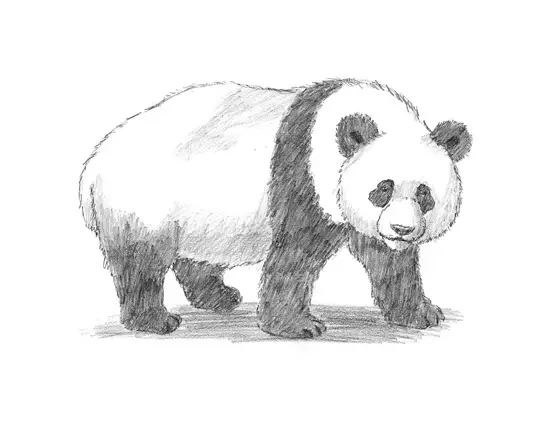 |
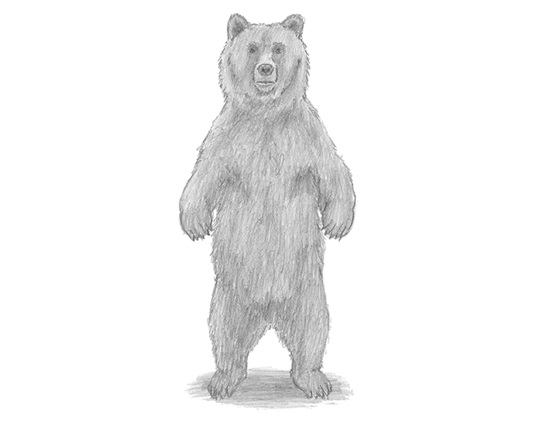 |
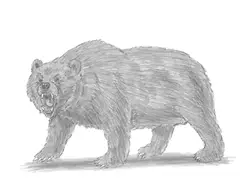 |







